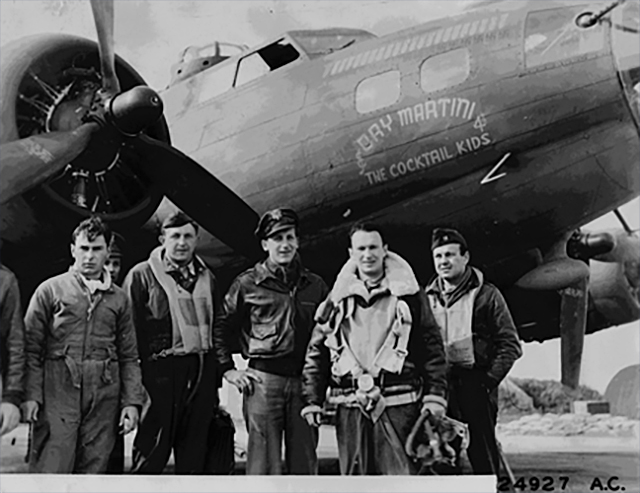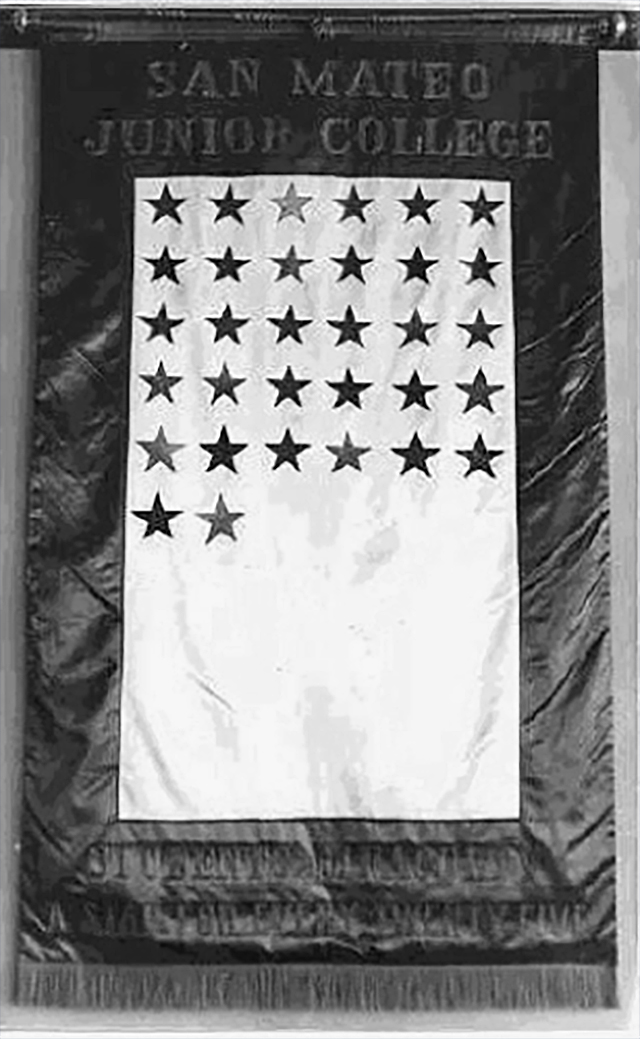CSM in World War II
The first thing San Mateo Junior College did after Japan attacked Pearl Harbor on Dec. 7, 1941, was to hold an air-raid drill on its Baldwin and Delaware campuses.
“The only alterations suggested [were] that the students keep in straighter lines, and that the room wardens know exactly where they are going,” college President Charles S. Morris noted.
Close behind was the building of a poison-gas decontamination center on the Baldwin campus in case the enemy dropped chemical weapons on the Peninsula. It sat unused for a year, then was folded into a community food-canning center as SMJC—and America—realized how drastically World War II would change everyone’s lives.
After the United States entered the war and men over 18 were drafted for military service, campus enrollment plunged from 1200 in 1940 to 300 in 1944. SMJC very nearly became a women’s college as the few men remaining were classed as 4-F (unfit for service), or were taking mission-critical courses such as radio until called up. The college’s own radio station, then called W6YU, was closed for the duration when the War Department curtailed broadcasting along the West Coast.
Japanese-American students and their families were uprooted by the government and placed in internment camps. Kazu Oshima ’48, later an electrical engineer who contributed to the Gemini space program, worked as a radio serviceman and electrician while interned in Poston, Arizona.
Many SMJC instructors became civil defense spotters. They sat on the roof of San Mateo High School on three-hour shifts with binoculars, sighting and logging all aircraft for authorities. Botany instructor Fred Klyver became the local coordinator of food production. He gridded the Delaware campus’ largely unbuilt grounds into 800-square-foot victory gardens that had few takers until food rationing began to take its toll.
“When people get hungry, they want to grow vegetables,” Klyver said.
In this as in other areas, Charles and Carlena Morris took the lead. Carlena sent the San Matean a snapshot of her presidential husband toiling shirtless in their victory garden, along with this poem she wrote:
“He doesn’t even wear a shirt or medals on his chest
But to change this War to Victory each day he tries his best.
On weekdays he’s “Professor” with a “key” upon his vest,
But on Sundays he is just John Doe, planting carrots with the rest.
Other San Matean stories told of dashing exploits by alumni aviators downing enemy aircraft or parachuting to safety. Les Williams, ’39, became one of the famed Army pilots known as the Tuskegee Airmen. His cousin Archie Williams, ’35, trained Airmen and became one of America’s first Black meteorologists. Major Allen V. Martini of the Army Air Force’s 305th Bomb Group lost an engine over occupied Paris in his Boeing B-17 Flying Fortress, aka the “Dry Martini,” on an April 1943 raid.
Many other alums returned with harrowing stories. Merchant mariner Jimmy Schepis drifted 18 days in a lifeboat on the Indian Ocean after his ship was sunk in June 1942. Margaret Ellis, whose parents apparently were missionaries in the Philippines, was captured two days after Pearl Harbor and interned for the duration at Cebu provincial jail.


As crucial to victory as the men and women in service were the civilians who flocked to the West Coast to work in shipyards and other defense industries. These included hundreds of thousands of African-Americans who left the South to become Rosie the Riveters and other defense workers. They increased California’s Black population by an order of magnitude—from 55,000 to half a million—from 1940 to 1950.
The children of this World War II generation were the Baby Boomers. They would change history by making claims on the democracy their parents had toiled to uphold.

